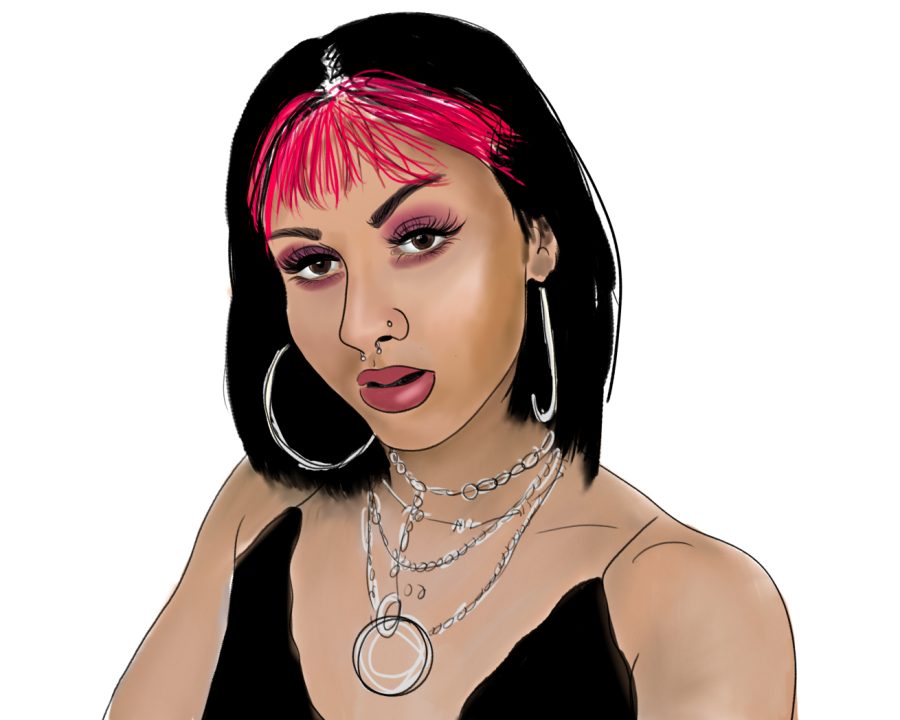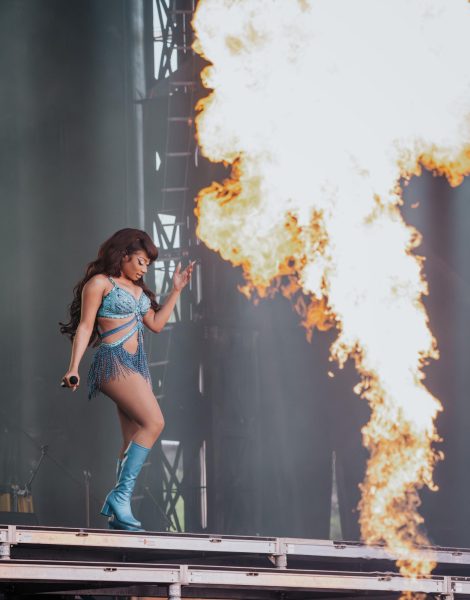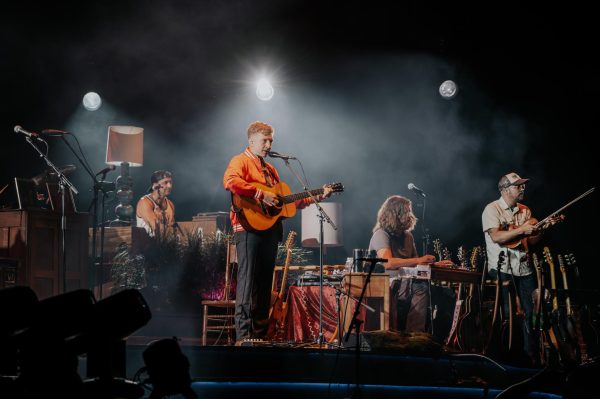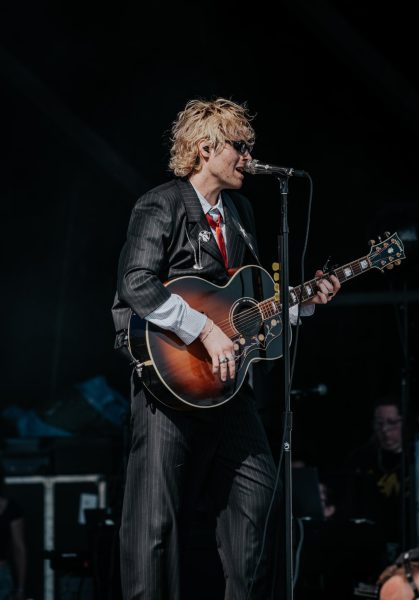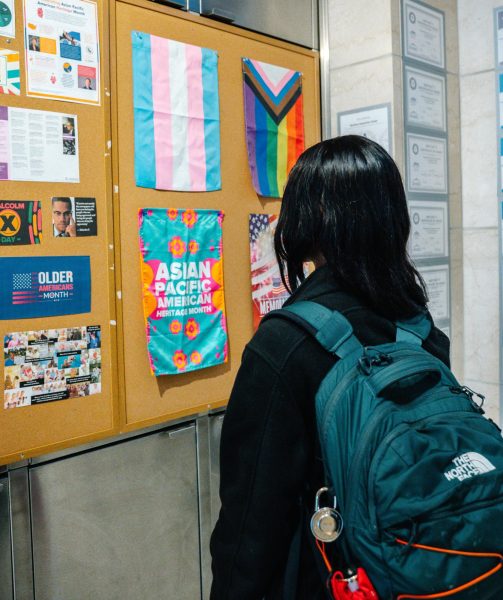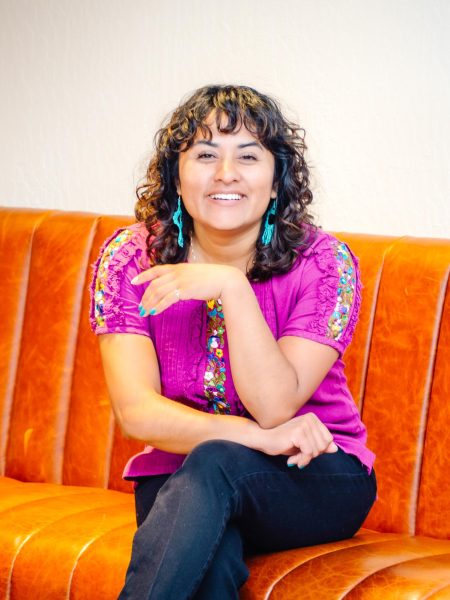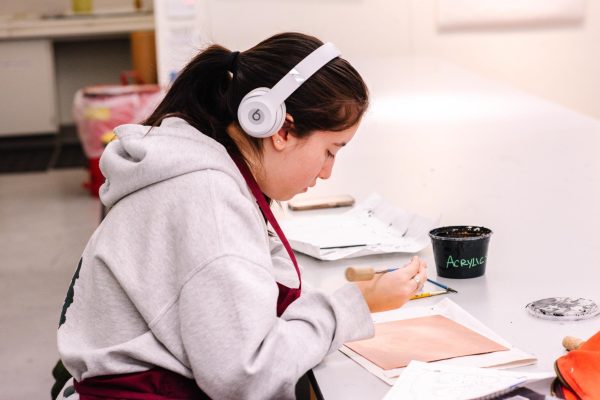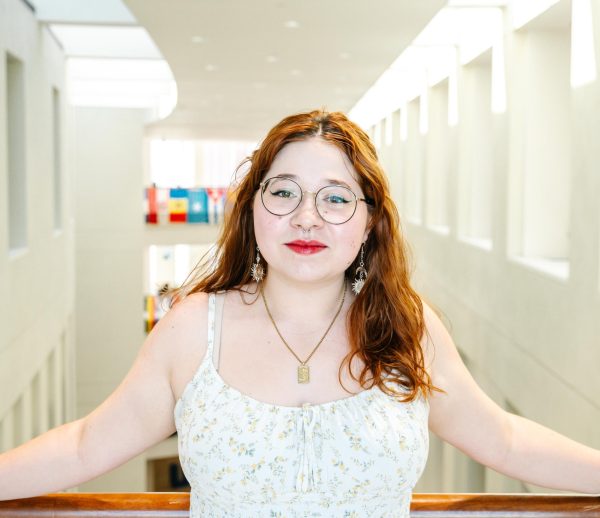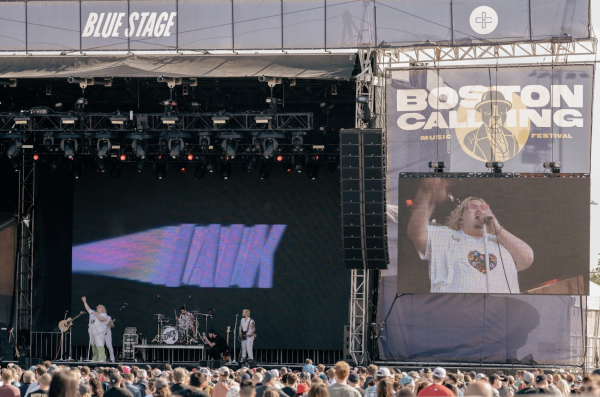TV tropes: More than just characters
March 5, 2021
Turn on the TV or go to the movies, and there will usually be some sort of trope or stereotype put onto the characters in that media. Whether these stereotypes are the bimbo or the himbo, the “I’m not like other girls” mentality, or a token minority, these archetypes have become engraved in society. However, these tropes and stereotypes can sometimes do more harm than good, especially towards the young audiences consuming this media.
In the late 1990s and early 2000s, the media saw a rise in classic tropes that have become so set in society today that they almost feel normal. As movies and books targeted towards teens began to gain popularity, the stereotypes these books and movies pushed also gained popularity as well. A clear example of this would be the plethora of stereotypes pushed in Mean Girls where the dumb blonde, the overly flamboyant gay best friend, and a handful of racial stereotypes had been accepted and even laughed at by the viewers of the movie.
There are always the drawbacks to these tropes, though, especially on their influence on society. When young adult fiction began to boom in the early 2000s and gave rise to characters such as Bella Swan of “Twilight,” Katniss Everdeen from “The Hunger Games,” and Clary Fray of “The Mortal Instruments,” so too did the “I’m not like other girls” mentality. Growing up, young girls have had this harmful mindset pushed onto them, with even characters like Belle from “Beauty and the Beast” perpetuating this mindset in their youngest years. As young girls became older, they were exposed to a new genre of literature, and with it, a new genre of girls to idolize. Characters like Hazel Grace Lancaster from “The Fault in Our Stars,” who scoffed at the idea of buying shoes and going shopping in favor of staying home and reading a book, had been the prime example of this. Hazel, as well as many other girls who mirrored her, thought they had been better than the girls who participated in traditionally feminine hobbies, or “quirky” and “different” because of their hobbies.
While this doesn’t seem so bad at first, giving those who didn’t fit in with the traditional thin, pretty, blondes that are seen in mainstream media an outlet, it quickly morphed into a way for men to pit women against each other, and to fuel women’s’ internalized misogyny due to low self-esteem. As Fionce Siow of The Daily Clog writes:
“Each utterance was another protective layer against confronting the true source of the problem: my low self-esteem and crippling insecurity. In an effort to elevate my self-worth, I sought to tear other girls down.”
For girls who want to express themselves in a traditionally feminine way, much like Hazel’s friend, they may feel lesser than or less intelligent than the girls who enjoy books and “alternative” interests. As the media pushes main characters that “aren’t like other girls,” and puts down girls with feminine interests, the girls with these feminine interests will begin to feel as though that their interests are ridiculous and that they are “trying too hard.”
In contrast to these girls, though, are the bimbos. They’re everything the “other girls” hated and didn’t want to be—dumb, blonde, popular, and pretty. However, with characters like Cher from “Clueless,” Brittany from “Glee,” and Karen from “Mean Girls,” the bimbo has been seen as an insult rather than its male counterpart, the himbo, which often can have a positive connotation. Himbos, like Disney’s “Hercules,” are seen instead as kind-hearted and muscular men, who are usually a bit dim, but are nevertheless seen as something to strive for or strive to have.
There are also the tropes created to give men an unrealistic ideal for women. The Manic Pixie Dream Girl, or MPDG, is a clear example of this, and the trope has existed since writing itself began. The MPDG exists for the sole purpose of brightening up the dull, boring existence of the male main character, usually with her ‘quirky’ personality and beautiful looks. Think characters such as Giselle in “Enchanted” for a more straight-forward version, as well as Alaska Young in John Green’s “Looking for Alaska,” and Ramona Flowers from “Scott Pilgrim” for a more subdued and played down version of this trope. MPDGs exist for the sole purpose of creating a fantasy for men of a woman who is strictly focused on helping them grow, rather than the woman being their own person and having a life outside of the man. As Hugo Scwyzer of The Atlantic writes:
“In art as well as life, the Manic Pixie Dream Girl ideal exists because too many men remain intimidated by women who will not revolve their lives around our needs and our growth.”
These tropes do not only apply to women, though, and also affect men. From a young age, boys are exposed to characters like superheroes, Indiana Jones, Han Solo, and countless others that fight the villain and get the girl with ease. These ‘tough guy’ characters rarely, if ever, showed emotion beyond rage and joy, and as young boys grew up and grew to idolize these men, they too began to develop these traits and feed into the toxic standards of masculinity that society tends to idolize.
When these boys get older, their focus tends to shift towards wanting to be the emotionless, calm, cool, and collected womanizer marketed to them in older television. Take characters like Joey from “FRIENDS,” Don Draper from “Mad Men,” Mark Sloane from “Grey’s Anatomy”—at least in his earlier seasons— the casanova trope is all over our screens. These characters give developing boys the idea that the people they date can be changed out as easily as the weather. Casanovas barely receive a second glance from society for their flirtatious attitudes; however when women behave in such a way, they’re seen as promiscuous.
Beyond gender, these tropes also impact how races are seen by society. The smart Asian, the sassy Black woman, the Latinx character being seen strictly for their sex appeal (such as the infamous pool boy and rich White woman affair trope)—the list seems to be endless. These characters often take a backseat to the usually White, usually thin, and usually more traditionally attractive main character in order to be their token best friend. Even children’s television seems to be continuing to push these tropes onto young audiences, as seen with Disney Channel characters like Raven from “That’s So Raven,” Roxy from “Hannah Montana,” and Ivy and her mom from “Good Luck Charlie,” who all fall into the ‘sassy Black woman’ stereotype. Not only does this possibly influence young viewers of color into believing that they too need to look and act like this in order to fit societal norms, but it continues to enforce the biases White people may have towards these races due to these negative stereotypes. As Nancy Wang Yuen for scholars.org writes:
“One study finds that popular media depictions of nonverbal features of people of color, including facial expressions and body language, influence racial biases for white viewers.”
But, what about the characters who defy the tropes, and even counteract them? Elle Woods from Legally Blonde breaks out of the “dumb blonde” stereotype that most of the characters put on her, only to turn around and be valedictorian of her graduating class. “The Suite Life of Zack and Cody” plays with this as well, where Maddie (the blonde) was the smart one, and London, who was Asian, was an airhead focused on fashion. Alyssa Greene from “The Prom” and Lily from “Dash and Lily” break away from their respective racial stereotypes as well, and pave the way for a new generation of representation on screen. Alyssa had been soft-spoken, stressed, and academically driven, and Lily was optimistic, romantic, and seemed to be focused on her creative hobbies rather than her academic ones. While it may seem obvious to develop a character outside of their stereotypes, finding characters like this can be harder than one may think.
Whether they’re gendered or racial, tropes and stereotypes have become a prevalent part of the media. While some of these tropes can be fun, more often than not, they can be harmful to the subgroup they’re targeted towards. Though film and TV has worked on moving away from these stereotypes and tropes, they still remain in many pieces of mainstream media, and will continue to for years to come.





















































